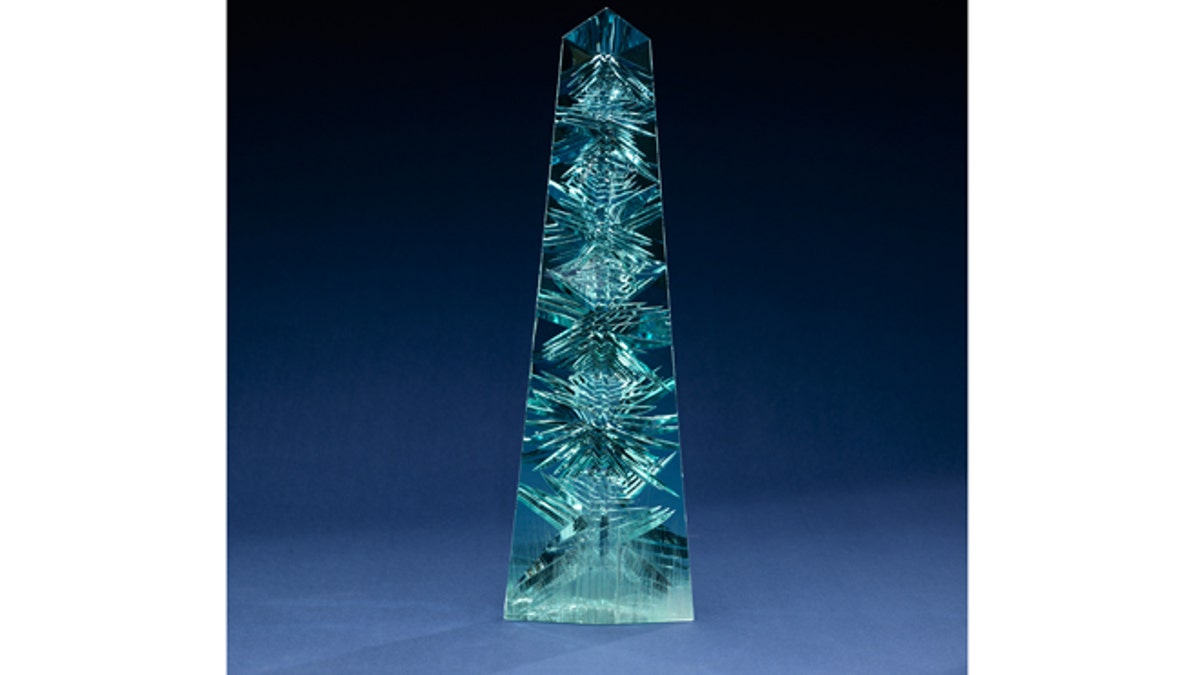
This undated handout photo provided by the Smithsonian Institution shows the obelisk-shaped Dom Pedro gem. (AP/Smithsonian Institution)
WASHINGTON – The world's largest cut aquamarine gem will soon go on display in its new home at the Smithsonian's National Museum of Natural History.
The museum will unveil the obelisk-shaped Dom Pedro gem Thursday for long-term display. The blue-green crystal was mined in Brazil in the late 1980s and is named for Brazil's first two emperors.
The gem was designed and cut by gem artist Bernd Munsteiner. It stands 14 inches tall and weighs 10,363 carats — or nearly 5 pounds. Cuts in the reverse faces serve to reflect light within the gem.
National Gem Collection Curator Jeffrey Post said museum visitors will be drawn to it because of its color and large size as it joins the Hope Diamond and Marie Antoinette earrings on display. It's difficult to place a value on the gem, though it was offered to the Smithsonian in the late 1990s for $7 million to $10 million, Post said.
In 2011, Jane Mitchell and Jeffery Bland of Palm Beach, Fla., donated the gem to the Smithsonian so it could be publicly displayed.
"As a piece, there's nothing like it, so how do you really know what the value of something like that is?" Post said, noting it will never be sent to auction. "I have no doubt it's going to become one of the iconic pieces of the collection."
The gem was carved from an original crystal that was dropped at one point and broke into three pieces. The Dom Pedro piece was more than 23 inches long and weighed nearly 60 pounds before it was cut, according to the Smithsonian. The other pieces were cut into jewelry.
It's been displayed previously for temporary stints at the Ecoles de Mines, a top gem school in Paris, and also in Houston, Palm Beach, Fla., and Germany. Now its permanent home will be the museum.
___
Follow Brett Zongker on Twitter at https://twitter.com/DCArtBeat
